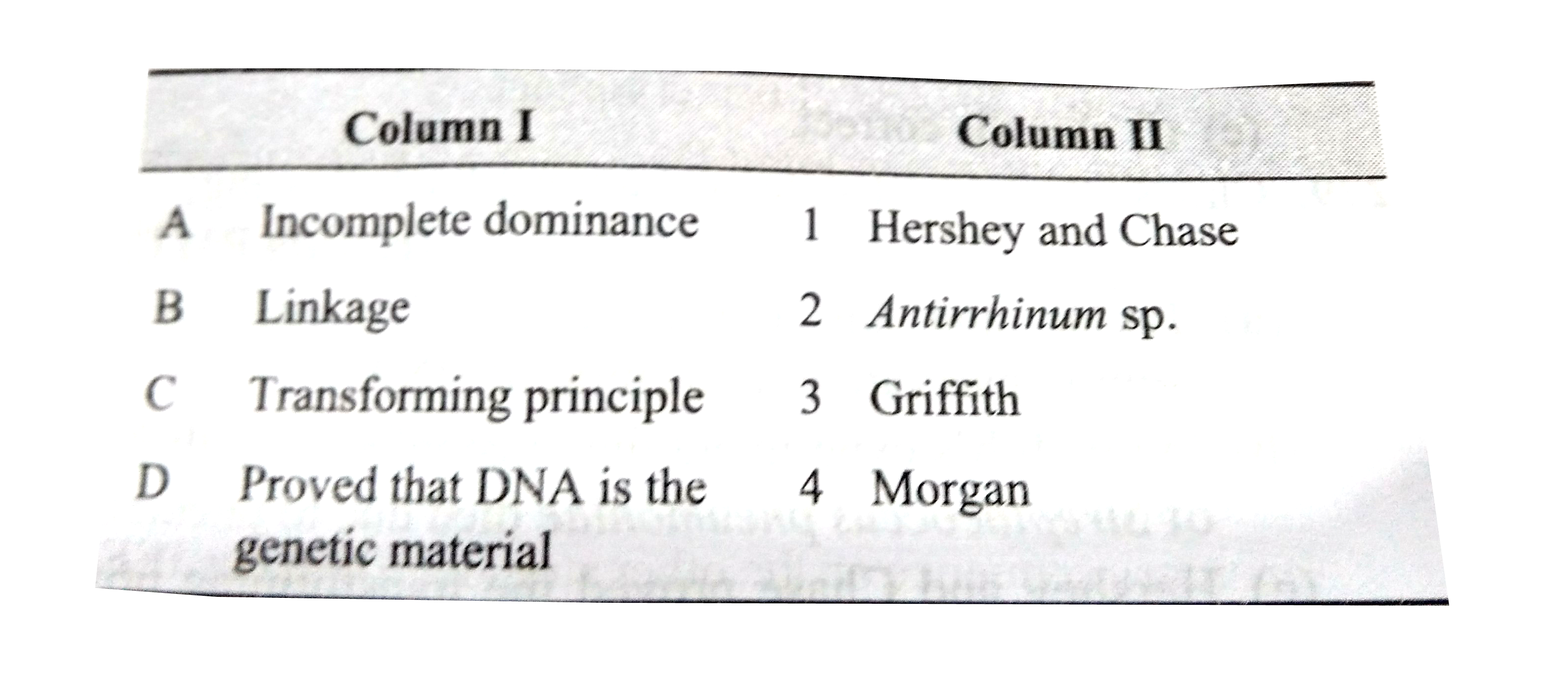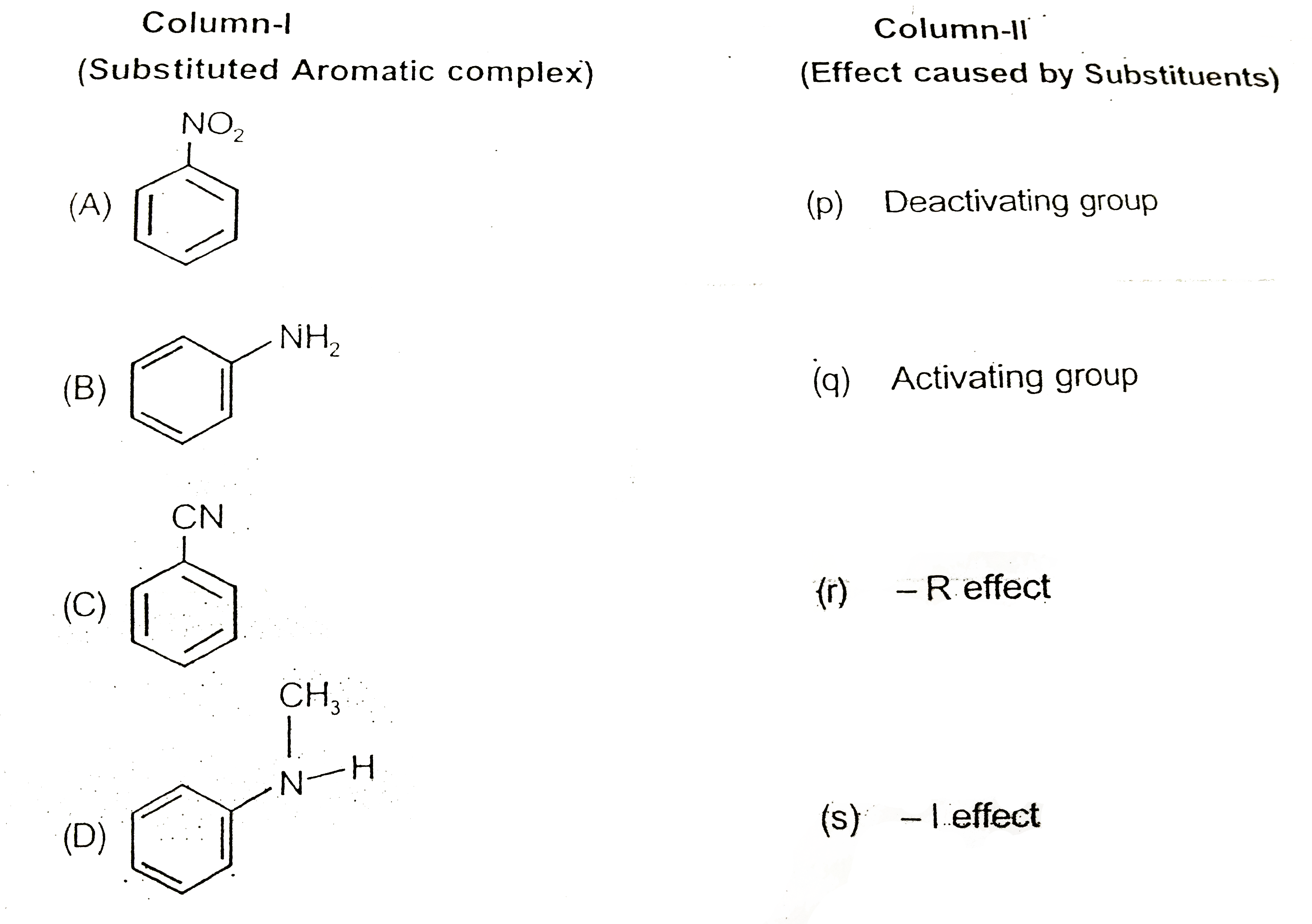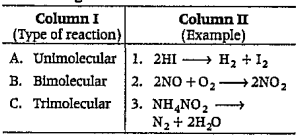Match the following coloumns and select the correct option. a. Hibernation(Coloumn-I) - (i) Snails(Couloumn-II) b. Aestivation(Coloumn-I) - (ii) Many zooplanktons(Coloumn-II) c. Migration(Coloumn-I) - (iii) Polar bears(Coloumn-II) d. Diapause(Coloumn-I) - (iv) Siberian cranes(Coloumn-II)
a(iii), b(iv), c(i), d(ii)
a(iii) ,b(i) ,c(iv) ,d(ii)
a(i) ,b(iii) ,c(ii) ,d(iv)
a(iii) ,b(ii) ,c(iv) ,d(i)
The correct Answer is:B
To solve the matching question, we need to identify the correct pairs between the processes in Column-I and the examples in Column-II. Let's go through each option step-by-step.
Step 1: Identify Hibernation
- Hibernation is a state of inactivity and metabolic depression in animals, typically during winter. Animals that hibernate enter a deep sleep to conserve energy when food is scarce due to cold temperatures.
- Example: Polar bears are known to hibernate during the harsh winter months.
- Match: a. Hibernation - (iii) Polar bears
Step 2: Identify Aestivation
- Aestivation is similar to hibernation but occurs during the summer months. It is a period of dormancy in response to high temperatures and arid conditions.
- Example: Snails often aestivate to survive the hot and dry summer.
- Match: b. Aestivation - (i) Snails
Step 3: Identify Migration
- Migration refers to the seasonal movement of animals from one region to another for breeding or to find food. This is not a state of dormancy but rather an active movement.
- Example: Siberian cranes migrate from Siberia to India during winter to escape the cold.
- Match: c. Migration - (iv) Siberian cranes
Step 4: Identify Diapause
- Diapause is a period of suspended development in an organism, often in response to unfavorable environmental conditions. It can occur at any time of the year.
- Example: Many zooplanktons enter diapause to survive harsh environmental conditions.
- Match: d. Diapause - (ii) Many zooplanktons
Summary of Matches
- a. Hibernation - (iii) Polar bears
- b. Aestivation - (i) Snails
- c. Migration - (iv) Siberian cranes
- d. Diapause - (ii) Many zooplanktons
Final Answer
The correct option that matches all the pairs is:
- a - iii
- b - i
- c - iv
- d - ii
- Hibernation is a state of inactivity and metabolic depression in animals, typically during winter. Animals that hibernate enter a deep sleep to conserve energy when food is scarce due to cold temperatures.
- Example: Polar bears are known to hibernate during the harsh winter months.
- Match: a. Hibernation - (iii) Polar bears
- Aestivation is similar to hibernation but occurs during the summer months. It is a period of dormancy in response to high temperatures and arid conditions.
- Example: Snails often aestivate to survive the hot and dry summer.
- Match: b. Aestivation - (i) Snails
- Migration refers to the seasonal movement of animals from one region to another for breeding or to find food. This is not a state of dormancy but rather an active movement.
- Example: Siberian cranes migrate from Siberia to India during winter to escape the cold.
- Match: c. Migration - (iv) Siberian cranes
- Diapause is a period of suspended development in an organism, often in response to unfavorable environmental conditions. It can occur at any time of the year.
- Example: Many zooplanktons enter diapause to survive harsh environmental conditions.
- Match: d. Diapause - (ii) Many zooplanktons
- a. Hibernation - (iii) Polar bears
- b. Aestivation - (i) Snails
- c. Migration - (iv) Siberian cranes
- d. Diapause - (ii) Many zooplanktons
The correct option that matches all the pairs is:
- a - iii
- b - i
- c - iv
- d - ii
Topper's Solved these Questions
Similar Questions
Knowledge Check
Match the column I,II,and III .Select the correct option :
 AA-i-a, B-ii-b, C-iii-cBA-iii-a, B-i-c, C-ii-bCA-ii-b, B-i-c, C-iii-aDA-iii-b, B-i-c, C-ii-a
AA-i-a, B-ii-b, C-iii-cBA-iii-a, B-i-c, C-ii-bCA-ii-b, B-i-c, C-iii-aDA-iii-b, B-i-c, C-ii-aMatch the coloumn I with column II and choose the correction option :
 AA=1,B=4,C=3,D=2BA=4,B=2,C=3,D=1CA=2,B=4,C=4,D=1DA=2,B=4,C=3,D=1
AA=1,B=4,C=3,D=2BA=4,B=2,C=3,D=1CA=2,B=4,C=4,D=1DA=2,B=4,C=3,D=1Match the coloumn I with coloumn II and select the correct option. a. Rhizome(Coloumn I) - (i) Lily(Coloumn II) b. Bulb(Coloumn I) - (ii) Gladiolus(Coloumn II) c. Sucker(Coloumn I) - (iii) Grass(Coloumn II) d. Corm(Coloumn I) - (iv) Curcuma(Coloumn II) e. Runner(Coloumn I) - (v) Banana(Coloumn II)
Aa(ii), b(i), c(v), d(iv), e(iii)Ba(iii), b(i), c(iv), d(ii), e(v)Ca(iv), b(i), c(v), d(ii), e(iii)Da(i), b(iv), c(v), d(ii), e(iii)
Match the coloumn-I with column-II

View SolutionMatch coloumn-I with coloumn-II and select the correct option using the codes given below (a) E. Coli(Coloumn-I) - (i) cDNA is early embryonic cell(Coloumn-II) (b) ADA deficiency(Coloumn-I) - (ii) Human insuline(Coloumn-II) (c) Rosie(Coloumn-I) - (iii) Alpha-1-antitrypsin(Coloumn-II) (d) Emphysema(Coloumn-I) - (iv) Alpha-lactalbumin(Coloumn-II)
View SolutionMatch the following. a. Gametangial contact (Coloumn I) - (i) Agaricus(Coloumn II) b. Planogametic copulation(Coloumn I) - (ii) Mucor(Coloumn II) c. Somatogamy(Coloumn I) - (iii) Puccinia(Coloumn II) d. Gametangial copulation (Coloumn I) - (iv) Allomyces (Coloumn II) e. Spermatization(Coloumn I) - (v) Pythium (Coloumn II)
View SolutionMatch the following coloumn. a. Corticolous (Coloumn I) - (i) Fungi growing on cow dung (Coloumn II) b. Xylophilous (Coloumn I) - (ii) Fungi growing on wood (Coloumn II) c. Epicylic (Coloumn I) - (iii) Fungi growing on hair (Coloumn II) d. Keratinophilous (Coloumn I) - (iv) Fungi growing on burnt wood (Coloumn II) e. Coprophilous (Coloumn I) - (v) Fungi growing on bark (Coloumn II)
View SolutionMatch the following. a. Mixotrophic protist (Coloumn I) - (i) Paranema(Coloumn II) b. Plasmodial slime mould (Coloumn I) - (ii) Polysphondylium(Coloumn II) c. Holozoic protist (Coloumn I) - (iii) Euglena(Coloumn II) d. Saprobic protist (Coloumn I) - (iv) Physerum(Column II) e. Communal slime mould (Coloumn I) - (v) Rhabdomonas (Coloumn II)
View Solution


